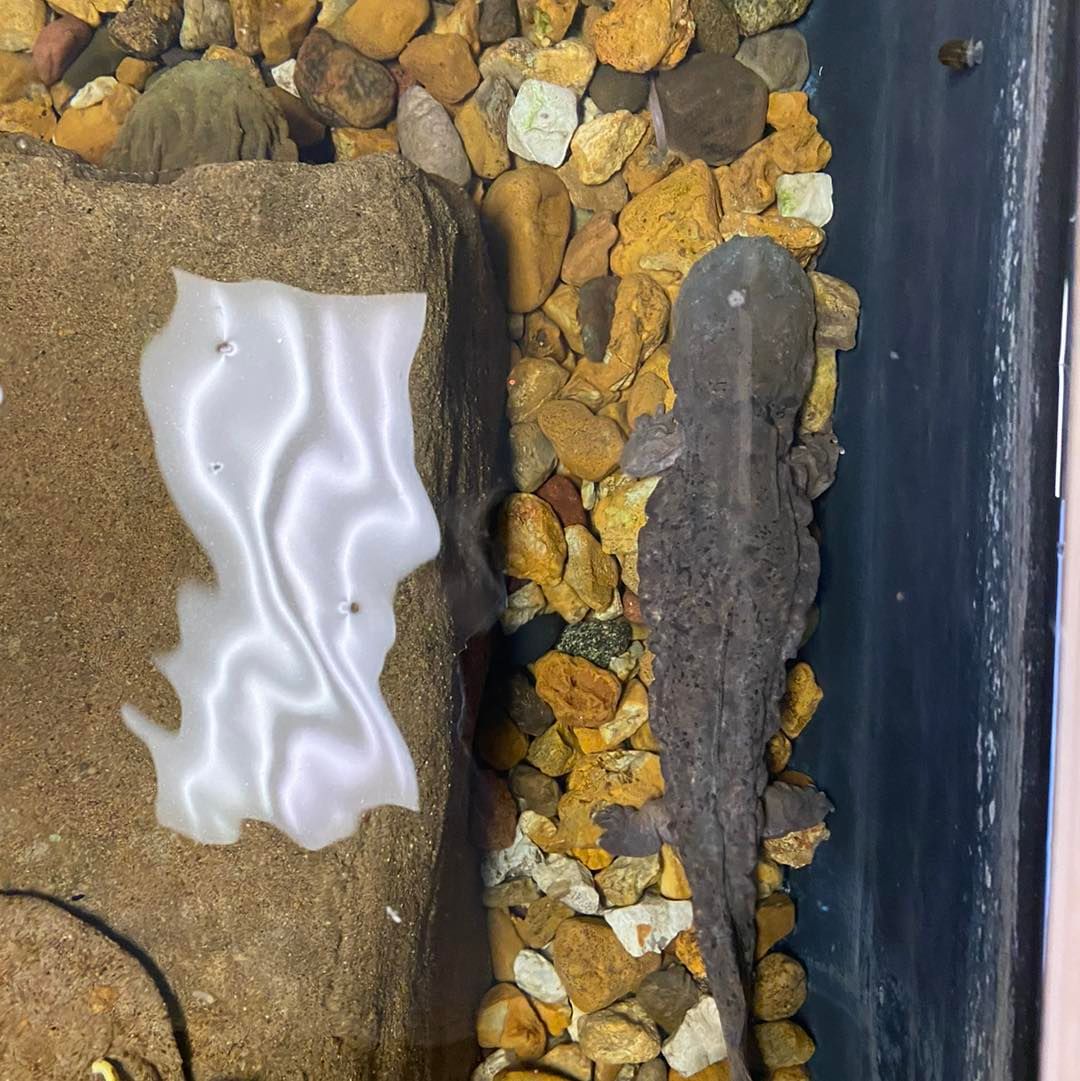Unearthing the Secrets of the Elusive Hellbender
– The Hellbender is an impressive species of giant salamander native to North America.
– These creatures lead a reclusive life mainly under rocks in clean, swiftly flowing streams and rivers.
– Hellbenders exemplify unique breeding behaviors and ecological niches.
– Conservation concerns for hellbenders highlight the importance of environmental maintenance and rehabilitation.
– Insightful studies and webinars shed light on their secretive lives and how we can aid in their preservation.
Have you ever chanced upon a creature so peculiar that it commands both intrigue and respect while seemingly belonging to the annals of ancient natural history? Such is the enigmatic hellbender, a living reminder of the delicate complexity woven into our aquatic tapestries. Let us dip our toes into the clear, cool streams where these intriguing animals thrive.
Imagine a setting where the rush of pristine water serenades the stones and boulders of a seemingly tranquil stream. Look closer, beneath the surface, and you might spot the ambiguous shape of a hellbender slipping quietly into the shelter of an underwater lair. Despite their formidable appearance, these secretive creatures lead a life often hidden from casual observation.
The hellbender salamander, also known as ‘snot otter,’ ‘devil dog,’ or ‘lasagna lizard’ due to its unique folds of skin, has a presence both awe-inspiring and charmingly awkward. With their flattened bodies and ripples of flesh that aid in oxygen absorption, hellbenders are perfectly adapted to their swift-moving aquatic homes.
Starting our journey, let’s immerse ourselves in their natural habitat. These salamanders favor cool, oxygen-rich streams and rivers with rocks and crevices for shelter and hunting grounds. They are sentinel species, indicating the health of the ecosystems they inhabit. As predators, they help maintain the balance by consuming invertebrates and keeping aquatic populations in check.
One can witness their hunting prowess by taking a peek during the twilight hours when hellbenders become more active. With a sudden thrust and a gulp, a crayfish or small fish vanishes into their substantial gape. This nightly ritual underscores the hellbender’s role in the aquatic food web, functioning silently yet significantly in the grand scheme.
When autumn arrives, a rare occurrence occurs in their domain’s zen-like stillness. The breeding season begins, and males engage in earnest preparations. They diligently excavate nests under large slabs of stone, creating a place for females to deposit their precious strings of eggs. The male hellbender becomes a devoted guardian, vigilantly overseeing the eggs until they hatch.
Protection is a word that often comes to mind with species as cryptic as the hellbender. With threats like habitat degradation, pollution, and disease looming large, these salamanders rely on the concerted efforts of conservationists and everyday nature enthusiasts to ensure their survival. Captive breeding programs and habitat restoration initiatives are crucial for mitigating population declines.
Each scientific study or informational webinar brings to light more layers of the hellbender’s secretive existence. Learning more about their behavior, genetic diversity, and physiology allows for better-informed conservation practices and public engagement and education opportunities.
During a recent webinar dedicated to these captivating creatures, several noteworthy highlights emerged:
– Hellbenders exhibit remarkable longevity, with individuals living up to 30 years or more, suggesting resilience and stability within their populations when conditions are favorable.
– Genetic studies unravel the complexities of their lineage, distinguishing between subspecies and informing us about their evolutionary past.
– The unique microhabitat requirements of hellbenders, like needing clean, silt-free waterways, emphasize the broader need for waterway conservation benefiting many species.
Crafting a tapestry of science and natural wonder such as this offers a chance to inspire. Every rock overturned, every stream preserved, every person educated becomes a motif in the grand design of environmental stewardship. Everyone has a role, from the smallest actions, such as picking up litter from a stream bank, to the larger efforts of advocating for clean water policies.
Consider the hellbender not just a salamander of significant size and curious demeanor but an emblem of untamed waterways. Envision yourself as part of their narrative—a custodian of the stones they dwell under. Through understanding and action, you can be a force of nature, harnessing your capability to foster change and ensure that hellbenders and countless other species continue to be more than just a whisper in the currents.
Our ongoing quest for knowledge summons us to continually update our perceptions and actions regarding the natural world. Like the hellbender, unexpected and full of surprise, conservation is an ever-unfolding story where each chapter reveals new puzzles and possibilities.
It’s invigorating to think of what lies ahead, both in our understanding and in the vitality of these remarkable creatures. The next time you’re near a clean, flowing stream, take a moment to reflect on the unseen dramas unfolding below the surface. Know that with each effort to preserve such places, not only are the hellbenders benefitting, but so are we.
*****
Source Description
I spy 2 adult hellbenders 👁️
These adult hellbenders are located in our behind-the-scenes stream. Hellbenders are a species of aquatic giant salamander endemic to the eastern and central United States. Males and females are alike, but males tend to be heavier and broader. They vary in color from grayish to olive brown and are occasionally black. Hellbenders are solitary, except during breeding season when they can sometimes be in groups of 10 or more. They are nocturnal and will take shelter under rocks and become active at night.
Who attended the Hellbender webinar on Tuesday?! Drop a comment below with something you learned.


